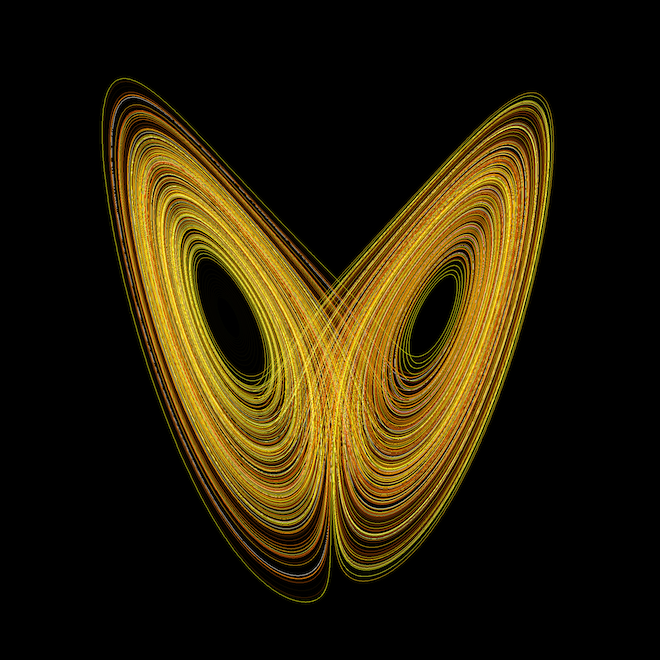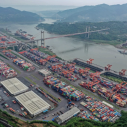Twenty-first Century Global Dynamics
archive

Twenty-first Century Global Dynamics
Since the 1980s, a vast amount of scholarship has been published about globalization, much of it motivated by the perception that humankind has entered an unprecedented era of social transformation. Yet as this body of research evolved, it became apparent that processes of globalization stretch far into the past, some say for centuries, others for millennia. If, as historian William McNeil argues, “the world is one interacting whole and always has been,”1 then one of the key challenges for scholars is to make the concept of globalization more salient by exploring continuities and comparisons across time and space. Interestingly, we are beginning to observe features of globalization in the twentieth-first century that should be analytically distinguished from earlier moments, including the final decades of the last century.
Articulating such differences is one of the animating concerns of the 21st Century Global Dynamics Initiative of the Mellichamp faculty cluster at the University of California, Santa Barbara. Another concern is to come up with an interdisciplinary approach to studying this specific historical moment. In 2015, as we were considering points of intersection in our work, we settled on the term dynamics because we were attracted to the ways it encourages reflection on motion, forces, and change. We have therefore taken up the concept as point of departure, as a provocation to interdisciplinary engagement, not as the naïve application of Newtonian law. Thus, it is perhaps worthwhile to reflect a bit more on our choice of terminology: global, dynamics, and 21st century.
Popular and scholarly usage of the term globalization only began to gain currency during the late 1980s and early 1990s, most commonly in reference to a stretching out of social relations with respect to such disparate phenomena as the fall of the Berlin Wall, the expansion of transnational finance, and the growing popularity of satellite television. During the late nineties and the decade that followed, usage became especially widespread, both as an enthusiastic expression of social progress—the phrase “global village” also peaked at this time—and as a touchstone for criticism of globalization’s dark side, which included environmental degradation, economic exploitation, and jihadist terrorism.2

Popularity also engendered reflection on the term itself: Was globalization a form of linguistic legerdemain that obscured longer cycles of spatial transformation? Was it merely refashioning previous concepts such as empire, ummah, and ecumene? Around 2007, popular and scholarly usage began to slide precipitously as some wondered if globalization was in fact an ahistorical and inchoate concept. Yet today, it seems urgently necessary to revitalize and sharpen our use of the term given the recent escalation of economic, social, cultural, and environmental concerns that require transnational perspectives and responses.

As for dynamics, the bump in scholarly usage roughly coincided with that of globalization. Derived from the Greek word for power (dynamikos), it has long been employed in the physical sciences, generally referring to macro analysis of fluids or bodies in motion and the forces acting upon them. Over time the approach has been adapted to various scales of analysis, from planets to particles, and the scope of inquiry has expanded to include systems analysis and systemic interactions. For example, climate science now pays conspicuous attention to interactions between oceanic and atmospheric systems.

These research trends have been tied to technological developments over the past fifty years that have made it possible for physicists and mathematicians to calculate millions of iterations out of a baseline interaction, contributing to the development of non-linear analysis, more popularly known as “chaos theory.” This has allowed researchers to understand how interactions can jump scale, as in the famous example of the butterfly effect on a distant hurricane system. It has also encouraged a reassessment of analytical variations that were previously explained as noise or computational error.
These insights have spawned a robust literature across the sciences, social studies, and humanities, resulting in a proliferation of journal titles featuring the term “dynamics” in such disparate fields as engineering, biosciences, and sociology.3 Whether the research involves immunology, culture, or manufacturing, the concept of dynamics directs attention to scale, process, and change.
These trends in the sciences paralleled developments in the humanities and social studies where, during the 1980s, scholars began to question structural presumptions about communities and societies, as well as prevailing notions of nationalism and sovereignty. They furthermore elaborated critiques of disciplinary orthodoxies that privileged homology, functionalism, and teleology. Interestingly, the rise of global studies since the 1980s coincides with the prominence of non-linear analysis in the sciences and postmodern critique in the humanities and social studies. This convergence may help to explain why many global studies scholars have embraced such concepts as friction, disjuncture, temporality, and genealogy.
…the concept of dynamics directs attention to scale, process, and change.
What then are the distinctive features of 21st Century Global Dynamics? My Mellichamp colleagues and I will offer further reflections on this topic in future editions of global-e, but allow me to make some preliminary observations with respect to my own research. The global dynamics of media has in fact changed considerably since the turn of the century, marking what appears to be a distinctive rupture. Technological changes—driven by deeper social and structural forces—are but one indicator. With more than half the world’s population now living in cities, billions of people download or stream television programs and feature films to view on a range of devices, including tablets and smartphones. Television broadcasting, a medium historically regulated by the state, has given way to an unruly multiplicity of distribution channels. Moreover, viewer behaviors are increasingly driven by what they discuss on social media, making the promotion and management of ideas a difficult challenge for commercial and government institutions. Viewers have also become producers (or prosumers), not only in the realm of entertainment, but also in news, so that media professionals find themselves chasing stories that bubble up as well as those that filter down.

Thus, at a phenomenological level, one senses decentering, dispersion, and an erosion of boundaries. Yet at a broad structural level, translocal and transnational media flows are in fact facilitated by a convergence of platforms (e.g., Facebook), practices (reality television), and stylistic conventions (continuity editing). Institutions of cultural production, distribution, and labor have likewise become globally interconnected in unprecedented ways.
Some of these developments were anticipated before the turn of the century, but only in their most embryonic forms. One need only reflect on the fact that twenty years ago satellite television—a transnational mode of broadcasting—was emblematic of the fin de siècle media revolution, while today the novel dynamics of digital media are characterized by personalization via handheld devices. Another way to express this distinction is to note that in the year 2000, less than one percent of the world’s population had access to a high-speed broadband connection, no one had a smartphone, and it would be four years before the launch of Facebook. The remarkable changes that have taken place since then call for new concepts and methodologies for studying the distinctive forces, fissures, and dynamics of media globalization in the 21st century.
1 William McNeil, “Globalization: Long Term Process or New Era in Human Affairs?”
2 Data on usage is derived from Google Trends and the Google Books Ngram Viewer.
3 A sample of ‘Dynamics’ journals listed chronologically by the initial date of publication:
and Oceans (1976); Journal of Economic Dynamics and Control (1979); Climate
Dynamics (1986); Cultural Dynamics (1988); Theoretical and Computational Fluid
Dynamics (1989); Journal of Non-Linear Dynamics (1990); Structural Change and
Economic Dynamics (1990); System Dynamics Review (1991); Dynamics and
Control (1991); Developmental Dynamics (1992); Open Systems & Information
Dynamics (1992); Studies in Nonlinear Dynamics and Econometrics (1996); Discrete
Dynamics in Nature and Society (1997); Group Dynamics (1997); Macroeconomic
Dynamics (1997); Review of Economic Dynamics (1998); Structure and Dynamics:
Anthropological and Related Sciences (2005); Journal of Computational and
Non-Linear Dynamics (2006); Journal of System Design and Dynamics (2007);
International Journal on Food System Dynamics (2010); Journal of Biological
Dynamics (2011); Transportmetrica B (2013); Earth Surface Dynamics (2013); Journal
of Spatial and Organizational Dynamics (2013); Management Dynamics in the
Knowledge Economy (2013); Structural Dynamics (2014).



